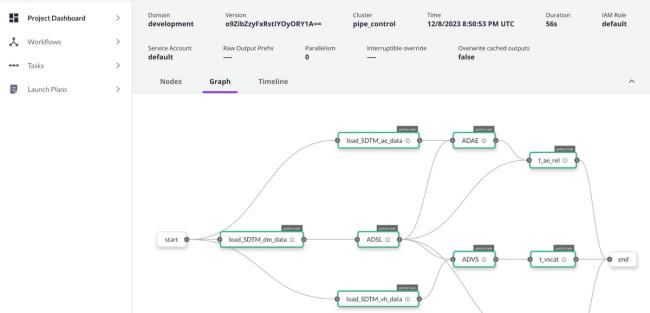How data scientists can make the most of enforced work-from-home policies
David Bloch2020-03-17 | 10 min read

At Domino, we’ve been fortunate to work with many amazing data scientists at leading-edge global companies. As such, we’ve learned best practices on how data scientists can work from home. Our hope is to share some of what we’ve learned with you in the spirit of helping your organizations adapt in the midst of the COVID-19 pandemic.
Many governments and companies are imposing work-from-home policies in a move to protect their employees and “flatten the curve” of COVID-19. For many data scientists, this may represent the first time they’re dealing with a fully remote working environment, which raises a number of questions:
- How important is face-to-face contact for productivity and culture?
- How will productivity be impacted by fully remote working teams?
- Will colleagues be able to collaborate and solve problems as efficiently as they can in person?
- How can teams remain motivated to continue delivering results for their organization?
- Are your internal systems set up in a way that enables effective work-from-home situations?
In partnering with the world’s leading financial, healthcare, and life sciences companies, we have gleaned the best practices from high-performing teams which allow them to withstand the challenges from the current pandemic. These teams often look to a data science platform such as Domino to support their growing data science practice with a specific focus on collaboration, reproducibility, and increasing individual researchers’ productivity – from anywhere.
Here are some tips and tricks to help your team maximize productivity while working remotely this spring. Consider the following:
Connectivity
- Make sure you have solid, high-speed internet at home, with access to the company VPN.
Planning
- Self-motivation can be a little harder when working at home, so setting your day with whatever methodology you want to use will keep you on schedule. Try to limit distractions and set up a comfortable workstation. Get up and walk around every few hours.
- Make sure you have the right data and environment setup for your research experiments.
- Don’t be afraid to ask questions.
Collaboration
- Share your work – not just code – with peers as often as possible. “Don’t leave those results in an indecipherable script or notebook that is for your eyes only. Take the extra time to clean up the analysis; add some headers and commentary, and ship the results to colleagues for feedback and a sanity check.”
- Consider daily stand-ups. Just a quick “round the table” on “what did I do the last 24 hours, what is my plan for the next 24 hours, and what blockers or issues do I have?”. These stand-ups should be quick, not meant to deep dive into issues, but can help replace the quick daily interactions you’re used to having in the office as a way to know what your peers are working on and where there’s an opportunity for further collaboration.
- Ask for feedback early and often. Being remote means you get less face time and opportunistic meetings with peers and stakeholders. Find other ways to interact. You will always need to know what is ultimately important to the business.
- Use a version control system. Leave comments and pull others into the discussion.
- Turn your video on and share screens as applicable during teleconference meetings.
Pro-tip: Being remote on video often requires a different speaking style than in-person. You must inject a little more energy, take more pauses, and ask more questions to ensure engagement. Being on teleconference calls makes it easy for people to multitask or otherwise get distracted.
- When sharing artifacts, use hyperlinks. Don’t overwhelm your colleagues with the arduous process of emailing a Jupyter notebook or an R script. Instead, send a link to a Github repo, Domino project, or Google Drive document.
Tracking
- Use a system to track the progress of you and your team. Workflow management tools like Trello, Jira, Asana, and Domino’s data science platform – particularly Domino’s project management features for data science leaders such as Assets Manager and Activity Feed – can help you see what others are working on and where they are blocked. Stay involved and connected by helping teammates to remove blocks where possible.
Productivity in the cloud
- Work with your IT and DevOps teams to figure out the best way to get access to data and compute when and where you need it now that you’re remote.
- Try to shift heavy data science work from local to cloud-based systems.
- Accept the fact that you may lose traction on projects without the same daily rhythm you have in the office with co-workers. Then, find ways to get back on track while your team works in a more distributed fashion than usual.
- Even though you’re not co-located, don’t forget that you’re still part of a team. Raise your virtual hand – in Slack or some other forum – if you need help.
- Share your work with others for review using a workflow management tool or data science platform as noted above.
- Be flexible to the dynamic nature of remote work. When you have spare cycles, pick up work that other co-workers are responsible for if they need to take some time off.
- Solve real problems.
- Learn from what’s working and what isn’t.
- Adapt the work and account for model drift.
Tips for Leadership
- Prioritization is more important than ever; focus the team on the things that are important and communicate them early and often.
- Set clear expectations in all situations but even more so in remote work environments; now is a great time to look at how the team tracks itself - reestablish your OKRs and sense check them.
- Be available: Respond quickly to team requests to help eliminate the “lag” that many remote workers feel in communication.
- Be patient: Many organizations may not be adequately equipped to deal with fully remote work environments, meaning your data scientists may not be as effective as they would like to be. Help them troubleshoot connectivity and system issues and be on the lookout for ways to make it easier for them to be productive.
- Be energetic: How many times have you seen someone yawn during video conferencing, or notice energy levels are down? Stand up, present as you would to an audience; your engagement and energy will lead to their engagement and energy.
- Be mindful: Things written in text often do not convey the tone that was intended in person. Avoid email ping-pong and use video conferencing frequently to touch base when you feel a point might be misunderstood.
- Be human: For many, remote work often means performing longer hours than they would in the office. Also, given how quickly COVID-19 forced the issue, many people are still figuring out how to be productive while handling children due to schools being closed. Set clear expectations and goals for your team, but let them deliver in a way that works with their personal situations during this transition.
Culture
- Focus on personal connections: Use your chat and video conferencing systems to host lunch and learn sessions, or just plain eat lunch together to continue developing strong team bonds.
- Host regular daily catch-ups that are purely for the sake of catching up and informal conversation between the team.
- Increase cadence of other communication particularly in project teams to keep motivation high and an emphasis on team-based approaches to solving problems.
Stakeholder engagement
- A key to success is communication between key business unit stakeholders and data science teams. Emphasize consistent contact with your stakeholders and share information often.
- Provide clear pathways for them to check progress on projects; systems like Jira are useful but can be daunting for business stakeholders. Do you need to translate for them, or create views specifically for stakeholders?
- Bring them into the team; when hosting meetings or even social calls for culture, invite your stakeholders along; they’re likely remote also, and might welcome the camaraderie.
Rinse and repeat
These are just some of the ways we see many of our clients getting the most value from their data science investments, even when working remotely. We are continually learning and building on our own best practice arsenal. What are some other best practices you can recommend for data science teams working remotely? Please comment here with additional thoughts or questions.
The Domino data science platform is purpose-built to serve many of these best practices at its core, with the end goal to help complex teams accelerate research and innovation. Try Domino’s data science platform to see if it might help your team.
RELATED TAGS
Subscribe to the Domino Newsletter
Receive data science tips and tutorials from leading Data Science leaders, right to your inbox.
By submitting this form you agree to receive communications from Domino related to products and services in accordance with Domino's privacy policy and may opt-out at anytime.



